Practical Advice from Podcasts on Handling Ticket Volume

Managing ticket volume is essential for IT service management (ITSM). Tickets represent customer issues, and their efficient handling directly impacts operational costs and customer satisfaction. For example:
- IT help desks in North America incur costs ranging from $6 to $40 per ticket.
- Businesses using AI-powered tools reduce ticket resolution times by 75%.
- High-impact tickets, which make up only 13% of incidents, account for 80% of lost time.
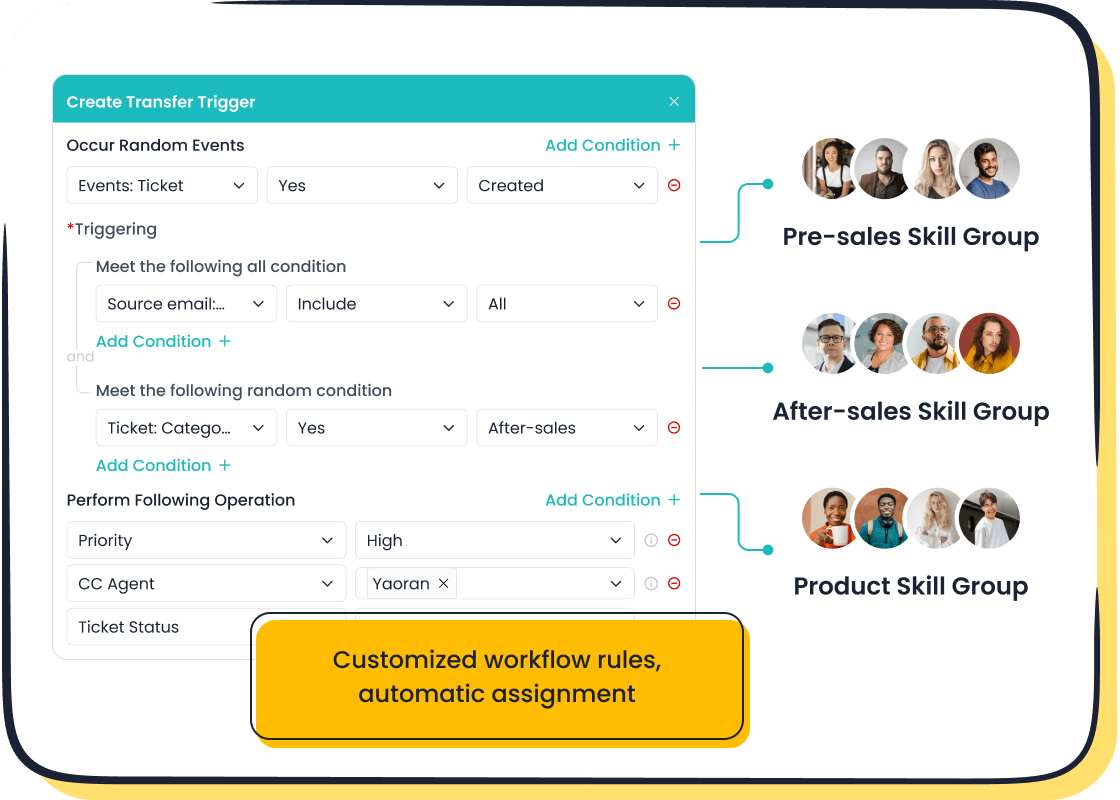
Podcasts provide practical strategies to address these challenges. They share actionable insights from ITSM professionals, helping you optimize workflows and prioritize critical issues. Tools like Sobot’s Ticketing System simplify ticket management through automation, enabling faster resolutions and improved efficiency.
Understanding Ticket Volume in ITSM
What Is Ticket Volume and Why It Matters
Ticket volume refers to the total number of support tickets your IT team handles over a specific period. These tickets represent customer issues, requests, or inquiries that require resolution. Managing ticket volume effectively is crucial because it directly impacts your team's efficiency, customer satisfaction, and operational costs.
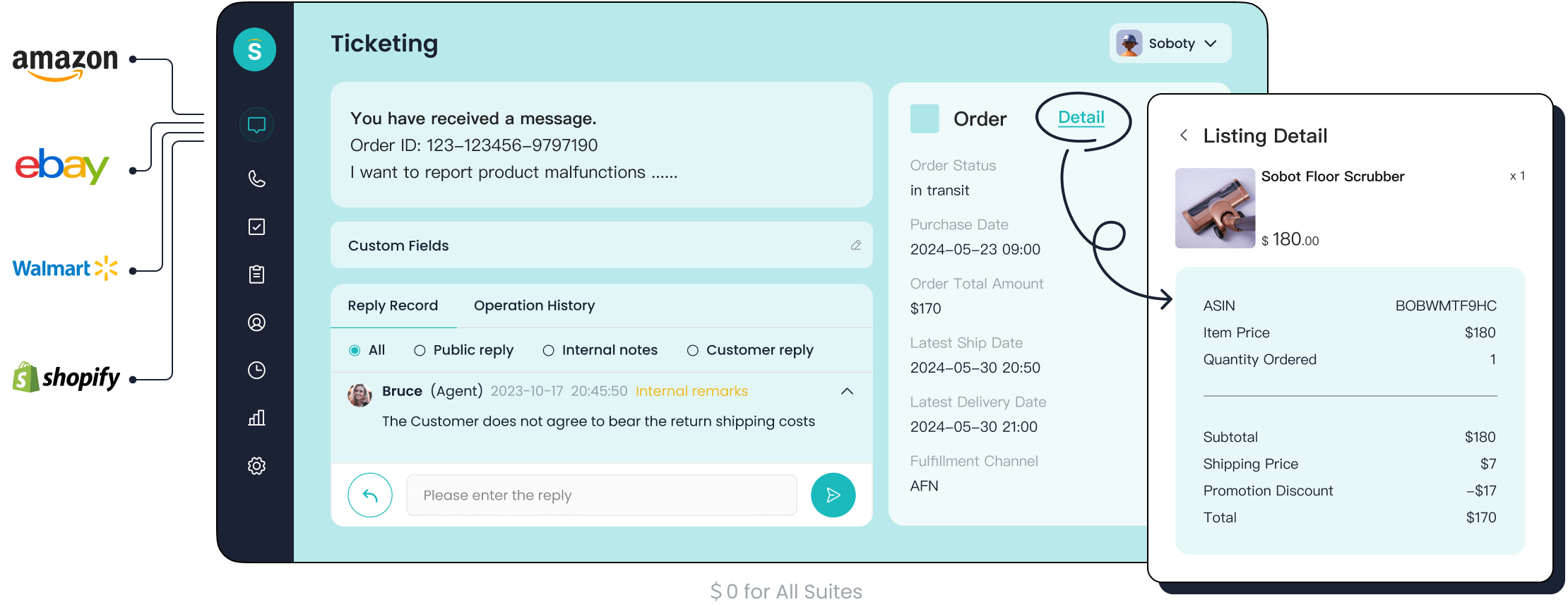
For instance, understanding the cost of support alongside customer satisfaction metrics helps you evaluate whether your resources are allocated wisely. High ticket volume can strain your team, leading to slower response times and reduced service quality. Tools like Sobot’s Ticketing System simplify this process by automating ticket routing and prioritization, ensuring your team focuses on what matters most.
| Metric | Importance |
|---|---|
| First Contact Resolution | Improves customer experience by resolving issues quickly. |
| Ticket Backlog | Highlights unresolved tickets, signaling resource allocation issues. |
| Customer Satisfaction Ratings | Reflects service quality and influences future ticket volume. |
Common Challenges IT Teams Face with High Ticket Volume
Handling high ticket volume comes with its own set of challenges. IT teams often encounter:
- Missing or inaccurate information in tickets, which complicates analysis.
- Tickets left unupdated during resolution, leading to data inaccuracies.
- Limited time for analyzing ticket data, resulting in poor metric tracking.
- Ineffective categorization schemes that reduce the utility of ticket data.
- Tools that are either too rigid or overly customized, hindering data analysis.
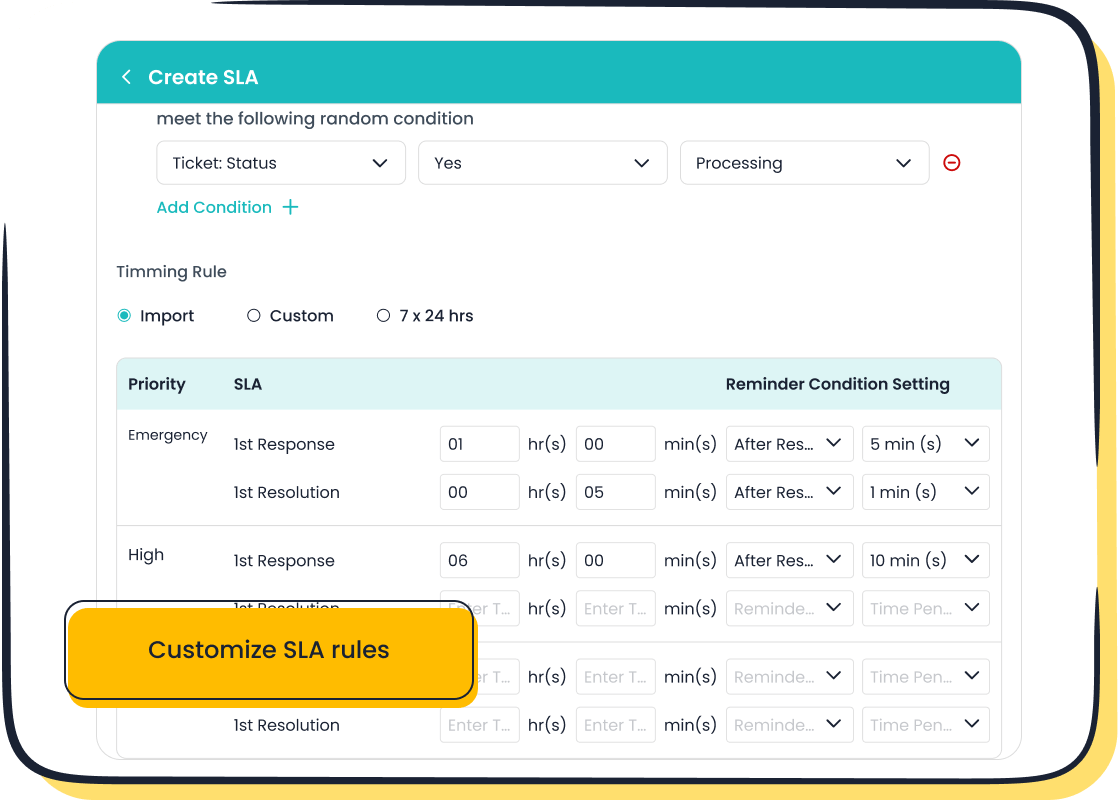
These challenges can overwhelm your team and reduce productivity. Sobot’s Ticketing System addresses these issues by offering features like automated ticket categorization and SLA management. This ensures your team spends less time on repetitive tasks and more time solving critical problems.
Metrics and Trends: Insights from Podcasts
Podcasts often highlight how businesses use metrics to manage ticket volume effectively. For example, Loom experienced a surge in users during the pandemic, increasing their contact rate to 4%. By analyzing support tickets and creating a knowledge base, they reduced this rate to 1%, saving millions. Similarly, Organic Basics developed a ticket prioritization algorithm based on customer behavior. This allowed them to assist potential buyers at critical moments, boosting sales.
| Metric | Importance |
|---|---|
| Reopened Tickets | Indicates issues with resolution quality, affecting ticket volume. |
| Tickets Solved | Shows how effectively your team manages incoming requests. |
These examples underscore the importance of tracking metrics like ticket backlog and resolution rates. Using tools like Sobot’s Ticketing System, you can monitor these metrics in real time, enabling data-driven decisions that improve efficiency and customer satisfaction.
Actionable Strategies for Managing Ticket Volume

Leveraging Automation with Tools Like Sobot's Ticketing System

Automation is one of the most effective ways to manage ticket volume in ITSM. By automating repetitive tasks, you free up your team to focus on resolving complex issues. Tools like Sobot’s Ticketing System simplify ticket management by automating ticket creation, routing, and prioritization. This reduces manual effort and ensures faster resolutions.
For example, Sobot’s system uses AI-powered triggers to assign tickets to the right agents based on predefined rules. It also integrates with multiple communication channels, including email, voicemail, and chat, ensuring seamless ticket handling. The system’s multilingual support allows you to cater to a global audience, while features like SLA reminders help you meet effective SLAs consistently.
The impact of automation is clear. Businesses using tools like Sobot’s Ticketing System have reported significant improvements:
| Metric | Result |
|---|---|
| Reduction in inbound discussion volume | 20% |
| Increase in positive feedback | 96% + |
| Correct answers provided | 80% |
| Customer satisfaction score | 95% |
| Self-service question resolution | 22.2% |
| Problem resolution rate | 85% |
| Customer happiness | 99% |
| Sign-off rate increase | 35% |
| COD collection rate increase | 40% |
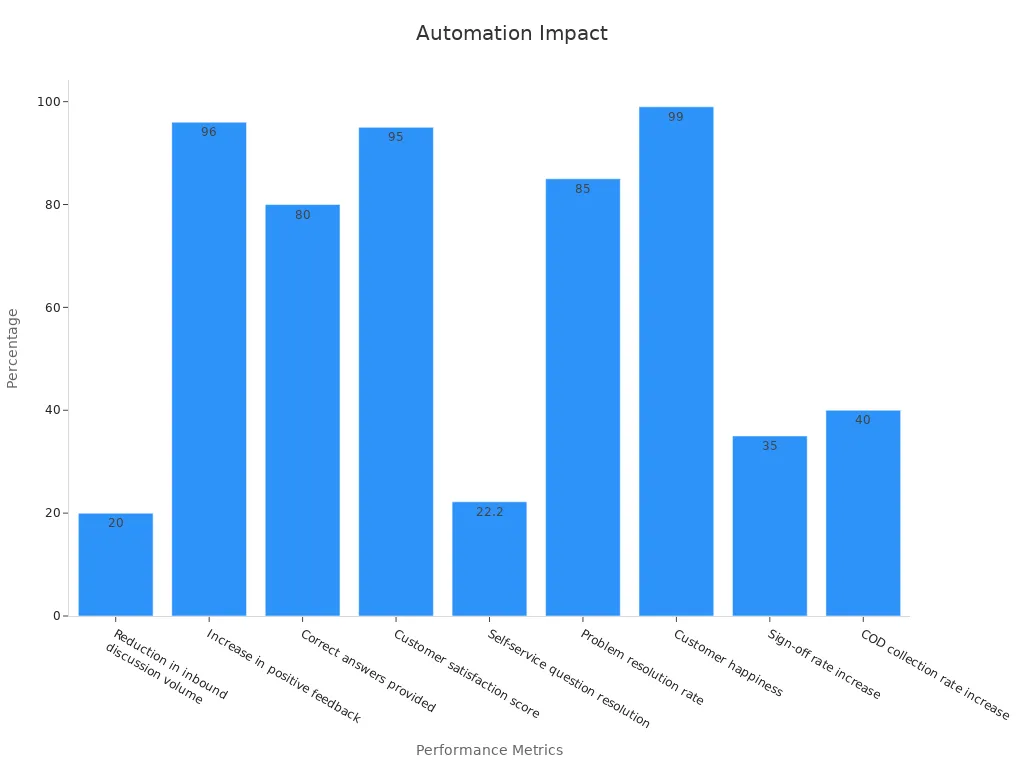
These metrics highlight the value automation brings to ticket management. By leveraging tools like Sobot’s Ticketing System, you can align your operations with business needs while achieving continuous improvement in customer satisfaction and efficiency.
Root Cause Analysis: A Long-Term Solution
Root cause analysis (RCA) is a powerful strategy for reducing ticket volume over time. Instead of addressing symptoms, RCA identifies the underlying causes of recurring issues. This approach not only resolves current problems but also prevents them from resurfacing.
Companies that implement RCA have seen remarkable results. Many report a 50% reduction in customer support call volume. Others experience a fivefold improvement in Net Promoter Score (NPS), reflecting enhanced customer loyalty. According to McKinsey, businesses that focus on effortless customer experiences can boost customer loyalty by up to 50% and increase revenue by 15%.
To conduct RCA effectively, start by analyzing ticket data to identify patterns. For example, if multiple tickets stem from a single software bug, addressing the bug eliminates the need for future tickets. Sobot’s Ticketing System supports this process by providing trusted analytics and smart notifications. These tools help you pinpoint recurring issues and take proactive measures to resolve them.
By adopting RCA, you create a foundation for continuous improvement. This strategy not only reduces ticket volume but also enhances operational efficiency and customer satisfaction.
Prioritizing Tickets for Maximum Efficiency
Prioritizing tickets ensures your team focuses on the most critical issues first. This strategy improves resolution times, prevents backlog accumulation, and enhances customer satisfaction.
Effective prioritization relies on clear metrics. For instance:
| Indicator | Description |
|---|---|
| Customer Satisfaction | Prioritizing high-priority issues enhances customer satisfaction and experience. |
| Resource Allocation | Efficiently directs resources to where they are most needed, optimizing operational efficiency. |
| Resolution Times | Faster resolution times improve performance metrics and meet SLA requirements. |
| Backlog Management | Proper prioritization prevents backlog accumulation, ensuring timely handling of critical issues. |
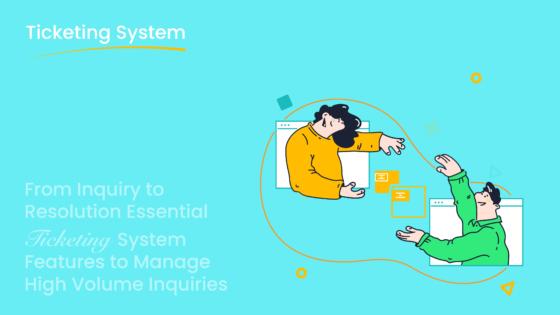
Sobot’s Ticketing System simplifies prioritization with features like ticket classification and SLA reminders. You can set priorities based on urgency, impact, or customer type. The system also merges duplicate tickets, saving time and reducing confusion.
Metrics like resolution time, average handling time, and ticket backlog help you monitor the effectiveness of your prioritization strategy. For example, tracking resolution times ensures your team meets effective SLAs, while monitoring backlog prevents delays in addressing critical issues.
By prioritizing tickets effectively, you align your operations with business needs and deliver a seamless customer experience.
Lessons from Podcasts: Real-World Insights
Innovative Approaches to ITSM Challenges
Podcasts often highlight creative strategies that businesses use to overcome ITSM challenges. For example, a UK-based ITSM analytics SaaS firm revamped its sales and marketing processes to better align with customer needs. By segmenting their target audience and crafting tailored messaging, they improved engagement and outcomes. This approach helped them protect and expand key accounts, including Procter & Gamble. Such strategies demonstrate how focusing on customer-specific solutions can drive improvement in both service delivery and business growth.
You can adopt similar methods by analyzing your ticket data to identify patterns and trends. Tools like Sobot’s Ticketing System simplify this process by providing trusted analytics and smart notifications. These features allow you to pinpoint recurring issues and address them proactively. By leveraging these insights, you can align your operations with customer expectations and achieve continuous improvement.
The Role of SLAs in Managing Ticket Volume
Service level agreements (SLAs) play a critical role in managing ticket volume effectively. They set clear expectations for response and resolution times, ensuring accountability and consistency. However, meeting SLAs can be challenging, especially for high-priority incidents. Each incident update decreases the likelihood of meeting the SLA by 2.2%, while failing to double-check incident priority reduces it by 8.2%. On the other hand, reassigning an incident increases the likelihood of meeting the SLA by 64.7%.
| Profile | SLA Achievement Rate | Key Characteristics |
|---|---|---|
| 2 | 1% | sys_mod_count ≥ 18, impact Medium or higher |
| 3 | 99% | Modified < 4 times, priority moderate or lower, no KB article used |
Sobot’s Ticketing System helps you manage SLAs efficiently by offering features like SLA reminders and automated ticket prioritization. These tools ensure your team focuses on critical issues while meeting SLA requirements. By tracking metrics like resolution times and backlog, you can monitor SLA performance and make data-driven adjustments to improve efficiency.
AI and Automation: Transforming IT Service Management
AI and automation are revolutionizing IT service management by enhancing efficiency and customer experience. Industry podcasts emphasize the importance of balancing automation with human interaction to avoid over-automation. Strategic planning is essential for successful AI adoption, ensuring that automation complements rather than replaces human efforts.
Sobot’s Ticketing System integrates AI to streamline ticket management. It automates repetitive tasks like ticket creation, routing, and categorization, freeing up your team to focus on complex issues. The system also supports multilingual communication, enabling you to serve a global audience effectively. By combining AI-driven automation with human expertise, you can achieve significant improvement in ticket resolution rates and customer satisfaction.
Podcasts also highlight the value of AI in providing actionable insights. For instance, analyzing ticket data with AI can reveal patterns that help you address root causes of recurring issues. This proactive approach not only reduces ticket volume but also enhances overall service quality. By adopting AI and automation strategically, you can transform your ITSM operations and deliver exceptional value to your customers.
Building Collaboration and Community in ITSM

The Importance of Cross-Functional Teams
Cross-functional teams play a vital role in managing ticket volume and improving ITSM practices. These teams bring together individuals from different departments to address challenges holistically. By working collaboratively, you can achieve faster decision-making, as approvals no longer require multiple layers of bureaucracy. This responsiveness ensures your team meets business needs effectively.
Team members also develop enhanced communication and collaboration skills, which foster a culture of teamwork. Exposure to diverse perspectives encourages professional growth and skill development. Additionally, shared responsibility increases accountability, ensuring everyone remains focused on outcomes. A holistic approach to problem-solving allows your team to consider the broader organizational impact, leading to comprehensive solutions.

For example, when implementing Sobot’s Ticketing System, cross-functional teams can align IT, customer service, and operations to ensure seamless integration. This collaboration maximizes the system’s value, enabling continuous improvement in ticket management and customer satisfaction.
Knowledge Sharing and Communication Best Practices
Knowledge sharing is essential for ITSM success. It enhances productivity by giving new hires immediate access to resources. It also fosters innovation through the exchange of ideas, leading to breakthroughs. Improved decision-making occurs when team members gather insights from experts.
Real-world examples highlight the impact of knowledge sharing. Xerox’s ‘Eureka’ system allowed engineers to document and share solutions, preventing over 300,000 redundant fixes. Similarly, BP’s knowledge-sharing program saved nearly $700 million in two years by encouraging teams to share best practices.
To implement these practices, you can use tools like Sobot’s Ticketing System, which centralizes ticket data and provides analytics. This ensures your team has access to valuable insights, enabling faster resolutions and better decision-making.
How Podcasts Foster a Community of ITSM Professionals
Podcasts have become a powerful platform for fostering a sense of community among ITSM professionals. They provide a space for sharing insights, discussing challenges, and learning from peers. For instance, Vicki Rogers created a collaborative network of 26 institutions to improve service management practices. Her efforts demonstrate the importance of collaboration and shared learning.
Podcasts also allow professionals to tackle common challenges together. By listening to real-world experiences, you gain actionable insights that can be applied to your own operations. This sense of community drives continuous improvement and helps align your strategies with evolving business needs.
By engaging with podcasts, you not only stay updated on industry trends but also connect with a broader network of ITSM professionals. This collaborative approach ensures you remain adaptable and innovative in managing ticket volume.
People-Centric ITSM: Balancing Efficiency and Empathy
Supporting IT Teams During High Ticket Volume Periods
High ticket volume can overwhelm IT teams, leading to burnout and reduced efficiency. Supporting your team during these periods ensures they remain productive and motivated. You can implement several strategies to achieve this:
- Use automation and AI tools to streamline repetitive tasks, allowing your team to focus on complex issues.
- Enhance communication among team members with effective incident management practices.
- Leverage ticketing tools like Sobot’s Ticketing System to monitor performance metrics such as response time and customer satisfaction.

These techniques not only improve response times but also foster a collaborative work environment. For example, Sobot’s system automates ticket routing and categorization, reducing manual effort and ensuring faster resolutions. By providing analytics, it helps you identify bottlenecks and optimize workflows. Supporting your team with the right tools and practices creates a foundation for long-term improvement in IT experience management.
Customer-Centric Approaches to Ticket Management
Placing customers at the center of your ticket management strategy delivers real value. By understanding their needs and preferences, you can enhance their experience and build loyalty. Companies that adopt customer-centric approaches often see measurable results:
| Company | Approach Description | Outcome |
|---|---|---|
| Intergiro | Utilized customer feedback to enhance product offerings and speed up feature validation. | Achieved a 54% increase in engagement and faster feature validation. |
| ParkBee | Leveraged CSAT surveys to optimize services by analyzing the customer journey. | Led to a 20% reduction in customer service contact rate, enhancing overall satisfaction. |
| Taxfix | Employed targeted surveys to personalize user journeys and enhance retention. | Achieved a Net Promoter Score (NPS) of 68, indicating high customer loyalty. |
Sobot’s Ticketing System supports customer-centric strategies by offering features like multilingual support and SLA reminders. These tools ensure you meet effective SLAs while addressing customer needs promptly. By prioritizing customer satisfaction, you can reduce ticket volume and improve overall service quality.
Training and Empowering Teams with Tools Like Sobot's Ticketing System
Empowering your IT team with the right training and tools enhances their performance and confidence. Continuous training ensures your team stays updated on best practices and new technologies. Tools like Sobot’s Ticketing System further boost efficiency by automating routine tasks and providing actionable insights.
For instance, Sobot’s AI-powered chatbots handle repetitive queries, freeing your team to focus on complex issues. The system’s analytics feature helps you monitor KPIs, enabling data-driven decisions. Regular updates and training reduce errors and improve the relevance of customer interactions. These efforts lead to higher ROI and transparent improvements in your IT operations.
By investing in training and advanced tools, you equip your team to handle challenges effectively, ensuring consistent improvement in ticket management and customer satisfaction.
Effectively managing ticket volume is crucial for improving ITSM operations and customer satisfaction. By leveraging automation, prioritizing tickets, and conducting root cause analysis, you can streamline workflows and reduce inefficiencies. Podcasts offer valuable insights from ITSM experts, helping you adopt innovative strategies and stay updated on industry trends.
🎯 Tip: Tools like Sobot’s Ticketing System simplify ticket management with features like AI-powered automation, SLA reminders, and multilingual support. These capabilities ensure faster resolutions and improved customer experiences.
Explore Sobot’s Ticketing System and recommended podcasts to enhance your ITSM practices. By combining expert advice with advanced tools, you can transform your approach to ticket volume management and achieve long-term success.
FAQ
What is ticket volume, and why does it matter?
Ticket volume refers to the number of support tickets your team handles. Managing it effectively ensures faster resolutions, better customer satisfaction, and lower operational costs. Tools like Sobot’s Ticketing System automate ticket routing and prioritization, helping you focus on critical issues.
How can automation reduce ticket volume?
Automation streamlines repetitive tasks like ticket categorization and routing. Sobot’s Ticketing System uses AI-powered triggers to assign tickets efficiently, reducing manual effort. Businesses using automation report up to a 75% reduction in resolution times, improving overall efficiency and customer satisfaction.
What metrics should you track to manage ticket volume?
Track metrics like ticket backlog, resolution time, and customer satisfaction ratings. These indicators highlight inefficiencies and help optimize workflows. Sobot’s Ticketing System provides real-time analytics, enabling data-driven decisions that improve performance and reduce ticket volume.
How does Sobot’s Ticketing System support multilingual communication?
Sobot’s Ticketing System offers multilingual support, allowing customers to raise tickets in their preferred language. This feature ensures seamless communication across global audiences, enhancing customer satisfaction and reducing ticket resolution delays.
Can root cause analysis help reduce ticket volume?
Yes, root cause analysis identifies recurring issues and prevents them from resurfacing. Sobot’s Ticketing System provides trusted analytics to pinpoint patterns, enabling proactive solutions. Companies using RCA report up to a 50% reduction in customer support call volume.
See Also
Effective Strategies for Managing Your Live Chat Team
Essential Tips for Achieving Success in Depop Live Chat
Expert Techniques for Excelling in Customer Support Chats
